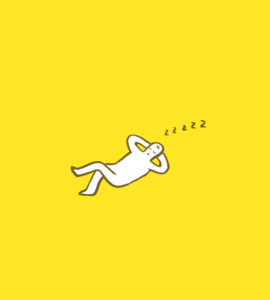
MindCheck is the Weekly Wednesday Kids Mental Health series with Dr. Ray Pataracchia, N.D. MindCheck provides in depth information on the orthomolecular approach to coping with mood and/or behavior disorders. The MindCheck Health Series is endorsed by the Mindful Network – ‘A Better Future for Children’s Mental Health’.
Good night. Tomorrow will be a great day!
Ray Pataracchia ND © 2013
It is not uncommon to see poor sleep in kids with mood (depression, anxiety), learning, or behavior (ADD, OCD, ODD, etc.) disorders. These kids often report an inability to fall asleep because their brain simply doesn’t shut off. Frequent night time wakening is also not uncommon. If sleeplessness becomes a cycle, the accumulated lack of rest worsens daytime functioning and in some cases, triggers relapse.
Why is sleep so important? Sleep is a restorative process where the brain gets the much needed down time and rest after a busy day. In this state of rest the parasympathetic system dominates and autonomic digestive processes occur passively. When we rise, the sympathetic system kicks in and motivates us to function and adapt to our environment in a state of awareness. If this sympathetic ‘fight or flight’ system dominates at bedtime it can make it difficult to fall sleep and if it dominates during the night, it can make it difficult to stay asleep.
Cortisol is the main stress hormone of the sympathetic nervous system. If this hormone is high at night it reduces melatonin, the hormone that helps us sleep. It is not uncommon to see kids with morning measures of cortisol that are high due to residual left over cortisol from the night before. Cortisol balancing can therefore be an important part of naturopathic or orthomolecular treatment of kids with mood or behavior disorders.
Good sleep hygiene may also solve sleeplessness. Good sleep hygiene at its basic level should include:
1) no TV or electronics (computers, hand held devices, Xbox/Wii gaming) 2 hours before bed
2) no heavy eating before bed
3) a sleep environment (bedroom) that has little if any ambient light, is comfortable, cool in temperature, and quiet
4) getting to bed early and allowing enough time for sleep (adults need 7–9 hours but growing kids need more night time restorative sleep)
5) daily physical exercise, so long as it’s not within 3 hours of bed time (exercise improves sleep and stress tolerance)
6) kids should avoid caffeine
If sleep hygiene doesn’t solve this problem, a neutral temperature bath with Epsom salt (magnesium heptasulfate) may be one of the simplest and most effective approaches. Magnesium is a natural relaxant. Oral grade magnesium can also be helpful.
Calcium can help those kids with fast metabolisms, to help shut off the brain if they have difficulty falling versus staying asleep.
Sleep problems can also emanate from various other metabolic compromises. Heavy metal excess can cause overstimulation as many heavy metals are stimulating. Under-methylation is a lack of B12 state that is associated with insomnia. Low thyroid metabolism is also associated with insomnia. Protein catabolism is a protein breakdown state where cortisol often dominates and makes it difficult to sleep. Growing children need iron and iron deficiency is also associated with childhood restless legs syndrome; iron is involved in dopamine formation and low dopamine is considered a causative factor of restless legs syndrome. [So meat and green leafy vegetables that are high in iron and, vitamin C which aids in iron absorption, can be important dietary/supplemental considerations.] Vitamin B6 deficiency is associated with poor dream recall; dream recall is a memory acquisition process.
These imbalances are conditions that we can do something about, conditions that are metabolic in nature and if corrected, can improve sleep, mental health, and general well-being. I hope that this information helps parents and kids to recognize some of the metabolic and lifestyle factors that can influence sleep.
